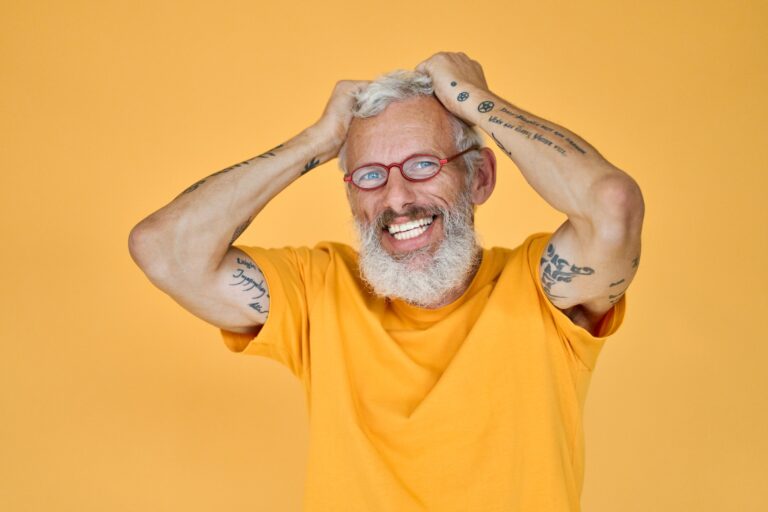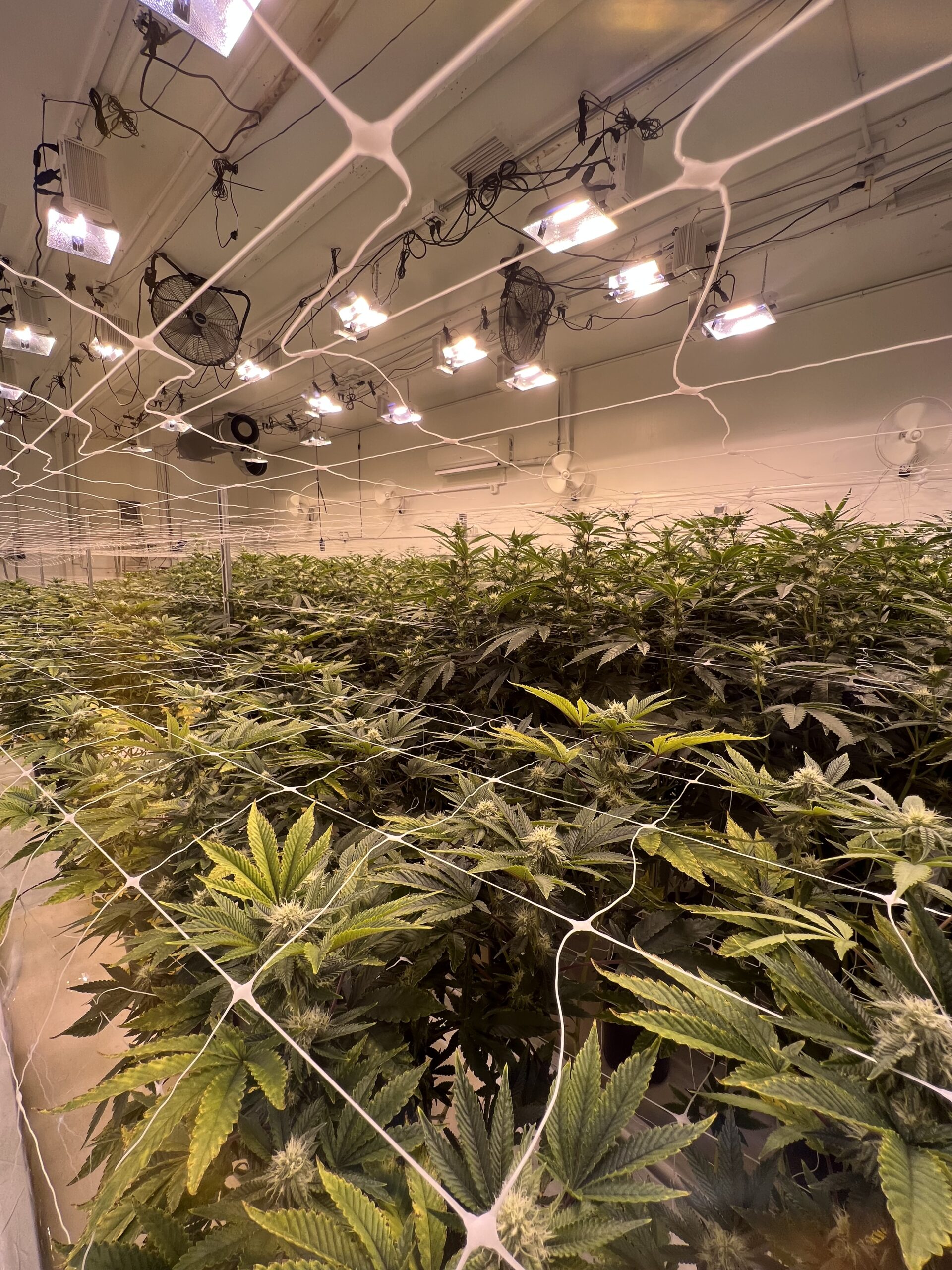Writing for the New York Times last week, Paula Span’s article on THC usage by older adults titled: Health Risks from Cannabis May Grow as User Age, wasn’t bad. In fact, it did provide some very important information for seniors using THC… and for everyone else too, for that matter.
Before we jump into the article’s specifics, we should also say that the headline might have been rewritten to say: Health Risks from Everything May Grow as People Age. For example, the risks associated with taking a shower, walking down stairs, or driving a car may also grow as people age, right?
Okay, so that being said, the article starts off by quoting a physician in San Diego, California, Dr. Benjamin Han, telling a story about one of his patients, a 76-year-old woman who, Dr. Han says, “struggled with insomnia.”
“She had problems falling asleep, and she’d wake up in the middle of the night,” Dr. Han was quoted as saying. “So, her daughter brought her some sleep gummies,” which contained Delta-9 THC.
What happened next was entirely predictable. “She tried a gummy after dinner and waited half an hour,” Dr. Han said, but she didn’t feel anything, so she took another… and then another after that until she had consumed a total of FOUR over several hours.
Each of those gummies contained 10 milligrams of Delta-9 THC, which stands for tetrahydrocannabinol, the psychoactive ingredient found in most cannabis products.
Dr. Han says that he advises patients who want to try cannabis to “start low; go slow,” telling his patients to take “just 1 or 2.5 milligrams of THC.” Obviously, his patient in this example who consumed 40 milligrams of THC, didn’t come close to following that advice.
First of all, telling someone to take 1 to 2.5 milligrams of something represents a difference of 150%. Mathematically speaking, it’s like describing a suspect as being six to 15 feet tall, weighing 200 to 500 pounds. Secondly, it should be obvious that taking too much of anything is a bad idea at any age; alcohol immediately comes to mind, but if you want a funnier example, it’s also true about prune juice.
In Dr. Han’s example, the woman reported “feeling intense anxiety and experiencing heart palpitations,” and since she reportedly had also been diagnosed as having hypertension and heart arrhythmia, she was frightened and went to an emergency room.
The lab tests showed that she wasn’t having a heart attack and she was sent home.
Dr. Han then points out the obvious: “But what if she’d grown dizzy or lightheaded and was hurt in a fall?” Han says that he has had patients injured in falls or while driving after using cannabis, although no specifics were offered.
“As a geriatrician, it gives me pause,” Dr. Han says. “Our brains are more sensitive to psychoactive substances as we age.”
Dr. Han also says that “a young person might have shrugged off such symptoms,” although I don’t know too many people that would “shrug off” feeling as if they could be having a heart attack. The simple fact is that taking too much of any intoxicating substance is a bad idea, regardless of one’s chronological age.
So… how much should I take?
The advice on dosing edible cannabis products is, at best, inadequate. Dr. Han’s advice to take 1 to 2.5 milligrams of THC isn’t bad advice. But, it’s far from ideal. How do I decide whether to take 1 milligram… or 2.5 milligrams, which is 150% more?
And, what about the inclusion of other cannabinoids, such as CBN, which is often found in sleep gummies? How does the inclusion of other cannabinoids impact dosage?
Some gummies also include other natural ingredients to promote relaxation, such as passion flower, which has been used for centuries to treat conditions such as anxiety and insomnia. Or, L-Theanine, an amino acid found in green tea, which studies suggest that Theanine helps with stress reduction and therefore, improves sleep. How should those be considered?
Clearly, in Dr. Han’s mind, he’s providing a number intended to protect his patients from severe harm, such as having a heart attack or being injured in a fall or an auto accident. He isn’t so much concerned with the relative effectiveness of THC. As a gerontologist, he’s concerned with his patient’s safety, as he should be, so he’s simply erring on the side of extreme caution by telling his patients to take 1 to 2.5 milligrams.
He makes no distinction for the method of consumption. C His real message when it comes to his patients using THC is: YOU’RE OLD. BE CAREFUL. YOU MIGHT DIE.
Proper dosing is the biggest problem cannabis faces…
The fact is, when it comes to answering the question of how much THC someone should take, pretty much wherever you go or whomever you ask, you’ll hear the same sort of sentence: Start with a small amount. Wait an hour. If you’re not feeling it, take more.
That’s terrible advice that, all too often, leads to people taking too much.
Imagine following that sort of advice with a bottle of tequila. You take a couple of shots, wait for a bit, and since you’re still feeling okay, you drink a few more. By the time you realize that you’ve cumulatively consumed too much alcohol, it’ll be too late. If you’re not careful, you can end up in trouble at any age.
And, how you choose to consume THC also makes a huge difference. Understand that cannabis today is nothing like how you might remember it from the 1960s or 1970s… or the 1980s or 1990s, for that matter. It’s much stronger today than it was in the past.
So, if you’re new to cannabis products, meaning you have no resistance to THC in your body, chances are that smoking flower will be far too strong for you. Eating a gummy or using a tincture is easier to accurately dose than smoking flower, but the effects of ingesting something will last longer than the effects from smoking, so you want to be careful and know what you’re doing.
(By the way, if you’re just starting out, and you want to smoke/vape THC, please consider trying a vape that has a 1:1 ratio of THC to CBD. Anything else will likely be too strong.)
It’s now legal in some form almost everywhere…
There are now 39 states and the District of Columbia allowing cannabis use for medical reasons. Recreational use is legal in 24 of those states along with D.C.
That is certainly one of the factors driving more older Americans to try cannabis products for a myriad of health-related concerns. The article points out that “older people are more apt than younger ones to try cannabis for therapeutic reasons — to relieve chronic pain, insomnia or mental health issues.”
What’s driving the increase in THC usage among seniors?
Today’s seniors are far less afraid of cannabis than their parents were. Whether they smoked it or not, they grew up with marijuana being around in high school or college. If they raised children, they likely found out that their kids or their friends experimented along the way.
Now, they are in their 60s or 70s, having trouble sleeping or maybe they’re dealing with anxiety… or even some sort of pain… and someone suggests they try cannabis instead of the pharma-solutions commonly prescribed. Most aren’t interested in smoking, but eating a gummy is a different matter.
As a result, today, seniors represent the fastest growing audience for THC gummies.
To Dr. Han, the benefits are “still unclear,” however, obviously someone is benefitting, because last year, a study by Senior Housing News showed that seven percent of adults 65 and over reported using cannabis in the past month… in 2021, that number was only 4.8%.
That’s a huge jump. In percentage terms, it’s a 46% increase of older adults using cannabis in the last four years. To put that into context, in 2006-2007, less than one percent of older adults reported using cannabis.
Studies also show that significant increases in use of cannabis were also found in those living with chronic diseases that includes heart issues, diabetes, hypertension, cancer and chronic pulmonary obstructive disease. And some are now using cannabis products, like gummies, for patients living with Alzheimer’s or dementia.
Silverado, an Irvine, California-based memory care operator has been experimenting with the use of THC for certain patients, and the results have been “encouraging.” Kim Burtrum, senior VP of clinical services with Silverado, believes THC has its uses in memory care settings, and that it should be investigated for use among residents who struggle with anxiety or weight loss.
In fact, some studies have shown medical cannabis may be effective for treating certain memory care residents, including those struggling with agitation and irritability. “We have anecdotal experience and it’s just been spectacular,” Butrum said. She also believes that medical cannabis products may be more effective for residents with specific types of dementia.
“When the frontal part of your brain is affected in frontotemporal dementia or with traumatic brain injuries, [residents can experience] more difficulty with impulse control,” she said. “And cannabis, in our experience, has been excellent for that.”
Butrum says that some residents at Silverado are taking a THC edible every two hours to quell their chronic anxiety, as opposed to benzodiazepines, which carry risks such as cognitive decline and impairment. Silverado also reports anecdotal success for memory care patients who have trouble gaining weight or maintaining a healthy weight.
“We had a resident in Arizona who paced all the time and had lost a significant amount of weight by pacing. A little cannabis for her was just magical,” Butrum said. “She could sit and enjoy engagements and interacting with her family and she gained a little weight from her increased appetite.”
With all of this being true, if we’re seeing an increase in emergency room visits by older users of cannabis products, is that because there’s actual danger associated with using such products, or is it simply the result of increased use by this population? In other words, if 46% more seniors are now using cannabis, it follows that there’d be more seniors reporting issues related to using the products.
The article also presents cases where cannabis products are working. One example is Liz Logan, age 67, who reportedly had grappled with sleep problems and anxiety for years. “I’d frequently be awake until 5 or 6 in the morning,” Logan said. “It makes you crazy.”
Logan searched online for edible cannabis products. She tried gummies containing only cannabidiol, known more commonly as CBD, but they didn’t help. However, those with 10 milligrams of THC did work, and without any noticeable side effects.
“I don’t worry about sleep anymore,” Logan said. “I’ve solved a lifelong problem.”
At the same time that we are seeing increased acceptance of products containing THC among older adults, it’s not hard to find articles making the case that there are increasing risks for people using these products. While some say that cannabis products are helpful for patients with dementia, others say the opposite is true.
The problem is that when you look closely at the studies claiming that cannabis can cause harm to certain patient groups, the researchers point out that NONE were randomized clinical trials; rather they were observational and could not ascertain causality. And some cannabis research doesn’t specify whether users are smoking, vaping, ingesting or rubbing topical cannabis on aching joints; other studies lack relevant demographic information.
According to Dr. Daniel Myran, an investigator at the Bruyère Health Research Institute in Ottawa:
“It’s very frustrating that we’re not able to provide more individual guidance on safer modes of consumption, and on amounts of use that seem lower-risk. It just highlights that the rapid expansion of regular cannabis use in North America is outpacing our knowledge.”
Well, at least he’s honest about that.
The medical community is trying, but it’s playing catch-up, especially here in the United States where neither the laws nor the research being conducted are in-sync with what tens of millions of Americans already know:
Cannabis products have many therapeutic uses, including promoting sleep, reducing anxiety or dealing with pain, but there are numerous others.
Just consider that the U.S. still has cannabis on its Schedule 1 list of dangerous drugs, right alongside heroin and LSD, and you see the utter ridiculousness of it all. To compare THC gummies that help you sleep to heroin or LSD is… which word is best here? Well, “stupid” certainly comes to mind.
As with anything else, the goal is to take the right amount of the right product. That shouldn’t surprise anyone, but when it comes to cannabis products, often it’s not easy to figure out which one is right and how much of it you should take.
One problem with determining proper dosing is that the medical research community primarily looks at physiological factors, like body mass, to determine dosage, but the factors that go into dosing THC products extend far beyond height and weight. There are psychological, environmental and lifestyle factors that must be considered, in addition to the level and nature of any past experience.
The fact is that one’s level of anxiety over taking THC products is a major influencer when determining the optimal dose of THC products. For example, if you tried a THC gummy in the past, and it didn’t go well, your level of anxiety is likely to have a big impact on how much you should take next time.
The problem with physicians and THC that no one talks about…
One of the problems patients face when asking their physicians about the use of cannabis products is that, as a group, physicians have scant personal experience using THC during high school or college. In a phrase, you’re very unlikely to run into an oncologist that tells you that he or she was a major partier back in their school days.
“Dude, I was a total stoner back in high school and/or college… kept my bong right behind my bed in my dorm room,” said no oncologist ever.
Thank God for oncologists and the countless other medical specialists that exist to save our lives. I don’t even want to imagine a world without them in it.
Unfortunately, when it comes to cannabis products, it will be quite some time before traditional medicine fully recognizes the therapeutic benefits of cannabis, or is able to offer meaningful guidance on dosage. It’s simply not something with which they’re familiar or comfortable.
It’s not just older folks that need to be careful when using today’s cannabis products. Too much THC is unpleasant at ANY age, and the cannabis industry needs to do a much better job with dosing recommendations and guidelines to prevent people from inadvertently taking too much, or too little.
# # #
ABOUT THE AUTHOR: Martin Andelman is the CEO at DeltriumTM, a company dedicated to creating “Gummies for Grown-ups.” Deltrium is the only company with a proprietary dosing algorithm consisting of a series of questions that consumers answer about themselves in order to obtain a personalized dosing recommendation, thus ensuring that no one takes too much or too little.
Deltrium uses only all natural ingredients to create the following blends, each with its own specific purpose: DREAM for sleep, SOOTHE for pain, UNWIND for anxiety and to relax, JOYFUL for a brighter outlook, ENERGIZE for extra energy without caffeine, and SOARING for that euphoric feeling. And, DeltriumTM products are all double-blind lab tested so you always know exactly what’s inside.
For more information about Deltrium and its products, please visit deltrium.com.








